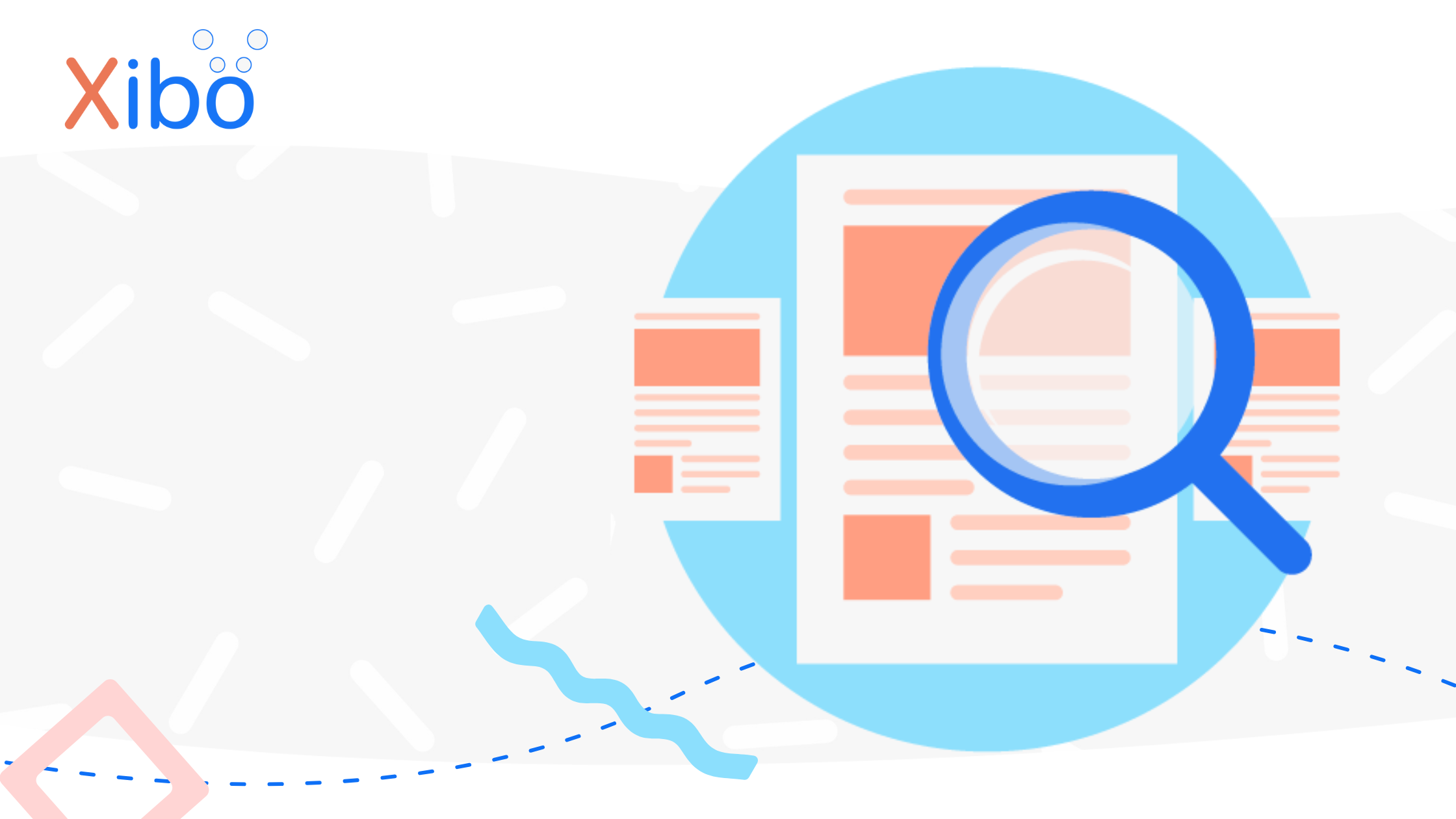
The information contained on this page is now archived. Please see our website and documentation for current information
Introducing DataSets
As most of our followers are aware the 1.3 series development preview release has been a long time in the making, in fact we have been working on it for well over a year. As it is getting close to completion and ready for a 1.4 stable release (a big milestone for us!) we thought it would be a good idea to pause and reflect on the new features we have managed to cram in.
The first one we are going to look at is the new DataSets feature.
Overview
DataSets are a new Xibo feature to design and display tabular data, formatted nicely, in a region on a layout.
Examples of where this could be used are:
- A drinks menu at a bar
- Tee times at a golf club
- Meeting room bookings
DataSets have been designed to be versatile and reusable and therefore come in two parts:
- The Data (DataSet)
- The Display (DataSet View)
This means that you can define a data set as a number of columns, add rows and then create “views” of this data on your layouts.
Creating a DataSet
DataSets also come under the standard permissions options that are available throughout Xibo. The creator of a dataset (or an admin) is able to set the permissions for the DataSet on a user group, or on a user by user basis. Only users with Edit permissions will be able to add/edit data and reorganise the data structure, only users with a view permission will be able to use the DataSet in their layouts.
Defining the structure of the data
Data Columns are used to define the structure of the data, each column can have a number of settings to achieve this, these are:
- Heading (the column heading to appear when you enter data
- List Content (enter a comma separated list of values in here to display in the drop down list)
- Column Order (the order to place the column)
There isn’t a theoretical limit to the number of columns Xibo can support – although a smaller DataSet is often easier to enter and display than an overly large one. Columns may be extended in the future to have support for different data types – currently only strings are supported.
Note: Columns can be added and removed after data has been entered. The ordering and list content of columns can also be changed after data has been collected.
Once all the required columns have been added, the DataSet is ready to have data recorded against it. This is done using the “View Data” task on the DataSet table view. This view will contain all of the columns that were added in the previous step and allow you to go through each one and enter data. In future we will look to extend this to support an import from CSV file and perhaps a link to 3rd party databases.
There is no “save” button on this interface, Xibo will automatically save your changes after each data entry.
Note: If all the rows are taken, more rows can be added to the data set by clicking the “Add Rows” button.
The DataSet is ready to be used on a layout!
Using the DataSet
Once added, the edit dialog will automatically appear allowing the user to pick their options for the DataSet View.
On this form the user can specify:
- Duration: The duration in seconds
- Update Interval: The duration in minutes the data should be cached on the client
- Lower Row Limit: The row number to start displaying the data
- Upper Row Limit: The row number to end displaying the data
- Order: The Ordering of the data (column name ASC|DESC)
- Filter: A filter option to filter the data with (Column Name=Value, Column Name=Value)
- Show Table Headings: Whether to show the column headings in the table
- Columns Selected: The columns to display (drag or double click to move between lists)
- Columns Available: The columns available to select (drag or double click to move between lists)
- Stylesheet: A CSS Stylesheet to render with the table
The resulting view will be showing the region preview window and displayed on the client.
Note: Once the DataSet view is configured it will automatically respond to edits made on the data – and it multiple views on the same DataSet can be created.
Summary
We hope this new feature will be useful for anyone wanting to display tabular data and will offer a vast improvement over manually creating a table view in the text editor. We also hope that in the future we can extend this feature to offer some simple chart generation on the client.
Comments and feedback are always welcome!
More
Read more from the blog

Xibo is now available on the Amazon Signage Stick
Xibo is now available on the Amazon Signage Stick — Amazon Signage’s purpose-built digital signage media player designed for businesses and organisations of all sizes, across a variety of industries.


November 2025 Release Update
Xibo’s November 2025 release updates. This update includes the enhancements released this month across Xibo for Tizen and Xibo for webOS.


Holiday Opening Times 2025/2026
Xibo holiday opening hours for 2025/26. During the festive period our support teams will be running at a slightly reduced capacity.

More
Read more from the blog


